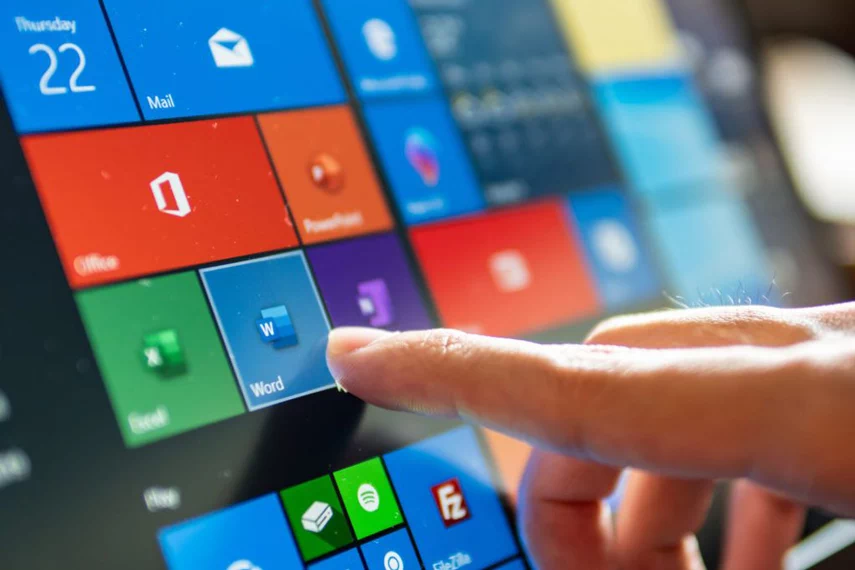Microsoft 365 is a cloud-based productivity suite used by organisations of all sizes. And you can think of the variety of Microsoft 365 applications as different tools in the toolbox that help you do your best work.
In this guide, we’ll explain what each Microsoft 365 application is designed to do so you can reap the full benefits of being a Microsoft user.
Apps for planning and time-management
Microsoft Lists turns list-making into a fast and easy process with ready-made list templates. Your lists can be used to help you manage events, track assets and resolve issues. You can view and manage lists from different devices and locations as well as share them with others.
Microsoft To-Do is a daily planner that offers intelligent and personalised suggestions to help you create your daily to-do list. It also allows you to break tasks down into simple steps, add due dates and set reminders. Whether you’re at the office, working from home or on the go, you can easily access your to-do list and share it with others.
Bookings offers a more efficient way to schedule meetings while optimising your organisational resources. Integration with staff’s Outlook calendars allows you to quickly find available times and avoid double-booking. There is also an easy to navigate webpage your customers can use to find and book appointments. You can customise meeting details, requirements and specify service providers to streamline the booking experience.
Apps for collaboration and project management
Planner is a visual task management program designed to support team project management. The plans built using this tool are made-up of content-rich task cards that contain useful elements such as due dates, timelines, files and labels. Planner automatically creates pie and bar charts to help you visualise task completion status. You can add everything related to your project into Planner so you don’t need to waste time searching elsewhere.
Project is a simple yet powerful project management tool that allows you to plan, manage and deliver work effortlessly – this includes both one-time projects and larger initiatives. Using Projects you can create a visual, interactive roadmap to show a centralised view of all projects that are being undertaken by your organisation. You have access to a range of built-in, customisable templates that are based on industry best practices for project management.
Visio offers an easy and intuitive way to draw flowcharts, diagrams, org charts, floor plans, engineering designs and much more. You can connect your flowcharts and diagrams with real-time data. Any updates to the data will be automatically reflected in the flowchart or diagram. Anything you create with Visio can also be shared with others via a web browser.
Whiteboard is essentially the virtual version of a physical whiteboard. It provides you with an infinite canvas to work on. You can easily draw professional-looking charts, diagrams and graphs using a pen, keyboard or your finger. There’s also the ability to share the same virtual canvas with others across locations and devices.
Apps for data analytics and reporting
Excel is the ubiquitous application for basic data analysis that many of us rely on regularly. For organisations, Excel is used to record expenditures and income, plan budgets, chart data and succinctly present fiscal results. There is an online version and desktop version of Excel and both have their pros and cons. With the online version, files are more accessible, it is easier to collaborate and you can use it for free. In comparison, the desktop version offers more features and greater storage capacity.
Power BI is one of the most sophisticated and effective tools for business intelligence gathering suitable for any organisation regardless of size. It offers a set of tools for collecting, sorting and presenting business intelligence data. The interface is easy to navigate and allows users to create reports and dashboards that are highly customisable and interactive.
Apps for creating and sharing content
Word is probably the most frequently used Microsoft application. It sets the standard for word processors, enabling you to create word-based documents of any kind. Like Excel, there is an online version and a desktop version for Word. We recommend using the online version for easier file access, sharing and team editing. The desktop version is a better choice if you need the full range of features and have larger files to save.
Microsoft Editor provides AI-powered writing assistance through advanced grammar checks and stylistic feedback on clarity, conciseness, formality and vocabulary. You can use Microsoft Editor to help you produce higher quality writing.
Powerpoint is another widely used Microsoft application that allows users to create, display and disseminate information in formats ranging from the basic slide to video and animations. PowerPoint is typically used to present information to a group at a meeting, seminar or conference.
Sway is a digital storytelling application from which users can easily create interactive presentations, reports, web pages, newsletters and more.
Publisher (For PC users only) is a useful tool for communicating information that needs to be more formally displayed and more easily distributed. For example, you can use Publisher to design and create professional-looking brochures, booklets, posters and newsletters.
Apps for communication
Outlook – the email client many of us are familiar with. Using Outlook you can read, send and manage emails as well as view and schedule meetings and create task lists. Outlook integrates your email, calendar, contacts, tasks and files so you can streamline your workflow without jumping between programs. Outlook also comes with enterprise-grade security that keeps your data protected while filtering out unwanted spam.
Microsoft Teams is a team communication tool designed for the modern workplace. It uses a chat-based interface that integrates people, content and tools into a single platform. You can use Microsoft Teams to discuss projects, schedule meetings, make phone or video calls, share and edit documents and presentations.
Yammer is a social networking service specifically for enterprise communication. Yammer enables organisations – particularly ones with multiple offices – to collaborate across locations. You can use Yammer to improve communication through general announcements, updates on events, questions and problems the team is trying to solve.
Apps for gathering and accessing information
OneNote is a cloud-based note-taking application that supports work mobility. Users can capture information while on the go and access it from different devices and locations.
OneDrive is the fundamental cloud storage application for Microsoft users. With a subscription to Microsoft 365, you receive up to 1 TB of cloud storage through OneDrive. This allows you to easily upload and securely store many large files. You can also back up the files you have saved locally by syncing them onto OneDrive.
SharePoint enables users to create, share and manage files, data, news and resources to support teamwork. You do this by building team sites or intranets which allow users to quickly find information and collaborate seamlessly with people both inside and outside the organization. Information is securely stored and authorised users can access it from almost any devices and location.
Microsoft Forms is used to create surveys, quizzes and polls that collect customer feedback, measure employee satisfaction, organise team events and more. Microsoft Forms also has built-in analytic features that allow you to evaluate responses. The results can then be exported as an excel file.
Apps for improving work performance
Power Automate (Flow) allows you to design automated workflows across multiple applications without having to use custom coding. You can use it to send email automatically, receive real-time alerts, copy files from one location to another, sync files across applications, collect data from one application and store it in another.
Power Apps is the ideal tool for times when your organisation needs a specific application to do a specific task. By using simplified development techniques, you can create sophisticated applications that streamline work processes and solve business challenges. This means you don’t need to know how to code to create something useful with PowerApps.
Exchange works together with Outlook to enhance your email and calendar functionality. With a focused Inbox that prioritises important messages and advanced search capabilities, you can get more done faster. You can also capture details, such as flights and hotel bookings, in your emails and add them to your calendar.
MyAnalytics allows you to understand your work patterns and learn ways to work smarter. It offers AI-powered suggestions via Outlook to help you improve your focus, productivity, networking and collaboration. By using Microsoft MyAnalytics, it’ll be easier to stay on track with priority tasks and emails and follow up with important people.
We have now covered an extensive list of Microsoft 365 applications designed to help you work smarter both individually and as a team. Contact us at Insight IT to learn more about Microsoft 365 applications and different subscription options. As a Microsoft Partner, we can provide customised training on how to use Microsoft 365 applications to meet the needs and goals of your business.





